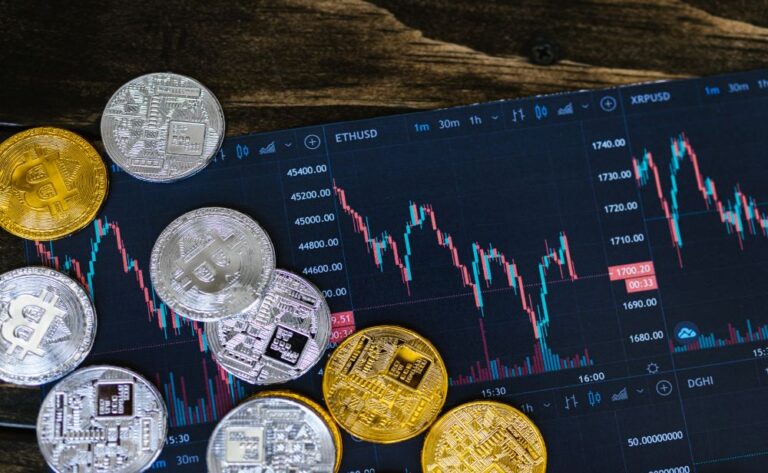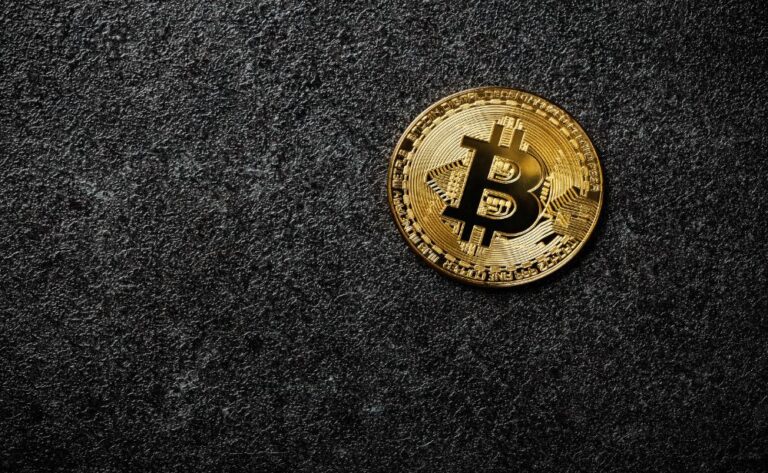Mining Ethereum in 2022

Whenever the idea of crypto mining is addressed, Bitcoin is typically the first money that comes to mind. Although Bitcoin has the largest market capitalization and is the most popular cryptocurrency, Bitcoin Mining Difficulty continues to approach all-time highs, resulting in less mining revenue than other cryptocurrencies. Ethereum mining is less expensive to initiate and produces substantially greater returns. To comprehend Ethereum mining, we must first examine Ethereum itself.
Description of Ethereum
Ethereum is the second most valuable cryptocurrency based on market capitalization. Ethereum is frequently compared to Bitcoin, although there are numerous fundamental distinctions between the two. Bitcoin is a decentralized payment system built on a blockchain that facilitates permissionless and secure transactions, but Ethereum aspires to be much more than a payment system.
Ethereum enhanced the capabilities of blockchain and transformed itself from a payment system into a network for distributed computing, commonly known as a “world computer.” This network features its own programming language and provides a platform for the development of decentralized apps. A distributed network of miners host an Ethereum Virtual Machine (EVM) on their node, which can run code and consequently execute smart contracts. Ethereum’s initial application relied on the issuance of tokens, but today we see complicated applications such as decentralized exchanges, lending systems, and even non-financial applications such as gaming and digital art marketplaces. Applications built on the Ethereum platform aspire to be decentralized and eliminate the need for a middleman.
To preserve the platform’s security and integrity, the Ethereum network is managed by nodes that validate all transactions. There are various kinds of nodes. Others, termed mining nodes, are responsible for validating transactions and safeguarding the network. Some are operated by users or developers in order to have direct access to the Blockchain and self-verify the state of the Blockchain. Let’s explore the topic of Ethereum mining in further depth.
What is mining Ethereum?
Ethereum employs the proof-of-work consensus algorithm at now. This technique asks miners to solve complex cryptographic riddles using their computational power (hashrate). A specific hash is generated by the cryptographic function for each transaction; miners use their computers to generate a large number of hashes in an attempt to deduce this number. The miner who reaches this amount the quickest gets to add a block to the Ethereum network. This approach ensures that there is always consensus on the blockchain’s state, despite the fact that it may sound incredibly complicated. At the same time, it makes it nearly impossible to change the blockchain’s status retroactively, as doing so would cost a significant amount of hashpower and therefore money.
Since maintaining the security and integrity of the blockchain demands computer power, miners are compensated with newly generated units of Ether (ETH), the Ethereum network’s native currency. Thus, mining is comparable to mineral extraction, in which labor is exchanged for precious materials. The reward for adding a block to the blockchain consists of 2 ETH and the transaction fees of the transactions contained within the block. As a result of the network’s increasing utilization this year, Ethereum transaction fees have soared this year and now account for a sizable portion of mining earnings.
As these validations take a great deal of computer power, the amount of electricity required rises, and as a result, mining Ethereum in 2022 will be expensive. However, Ethereum mining can still be profitable. Pooled mining, hosted mining, and cloud mining can produce greater results for smaller setups, but let’s review the typical method of mining at home first.
How to begin Ethereum mining at home
Even while there are mining farms and data centers dedicated to mining various cryptocurrencies, the beauty of crypto mining is that you can mine Ethereum at home using a GPU. This method is comprised of a succession of necessary steps:
1. Create a wallet for Ethereum
2. Select mining equipment
3. Install mining application
Join a mining group.
5. Start mining
1. Create a wallet for Ethereum
To get mining rewards, you must first have an Ethereum wallet. Your wallet is paired with an Ethereum address, which is where you can accept payments from other users and your mining profits.
There are numerous options for creating an Ethereum wallet, but the most important choice is between a hardware wallet and a software wallet.
A hardware wallet enables you to keep your private key offline at all times, making your wallet less susceptible to hacking. Ledger and Bitbox are both popular hardware wallets. If you prefer a wallet based on software, you can visit our Ethereum wallet page.
2. Select mining equipment
The choice of mining equipment is the most important step for any miner. Depending on the cost of electricity in your region, there are numerous hardware options on the market. The best way to improve your mining experience is to find a miner with a high hashrate and low energy consumption.
GPUs and ASICs are the two types of hardware machines used to mine Ethereum. ASIC machines can generate a much higher hashrate, but they can only mine using a single algorithm. They are designed specifically to efficiently mine a specific cryptocurrency. GPU cards, on the other hand, are significantly more versatile for mining various algorithms and blockchains. Even gaming and non-blockchain applications can utilize them. The Innosilicon A10 Pro is a popular ETH ASIC, and NVIDIA produces excellent GPU cards for mining Ethereum.
GPUs such as the AMD Radeon RX 5700 XT can achieve a hash rate of up to 56 MH/s while consuming approximately 110 watts of power. You can use a profitability calculator to determine how much ETH you can mine as well as the costs associated with operating the machine at your electricity rate. Multiple GPUs are required to increase the hashrate and performance of a mining rig.
A good heuristic for selecting a graphics card or ASIC is to divide its price by its hashrate to determine the cost per hashrate unit. In general, the lower this number is, the better, as it indicates how cost-effective the graphics card is.
3. Install mining application
To utilize your GPUs for Ethereum mining, you must also utilize mining software. After solving the cryptographic riddles with the GPU’s hashrate, this software effectively adds blocks to the blockchain.
The market is flooded with software for mining. Bitfly’s ETHminer, CGMiner, BitMinter, and Claymore’s dual Ethereum miner are some of the most popular mining software. These mining software programs improve your GPU cards and facilitate an efficient mining experience. Each of these programs includes installation instructions.
4. Join a mining pool
It is vital to realize that your home mining rig competes with mining farms and data farms worldwide. The hashrate achieved by these farms cannot be matched by an ordinary home miner.
Due to the luck-based nature of mining, it is impossible to predict when you will be the lucky miner to solve a block and earn 2 ETH + transaction fees if you mine at home without joining a mining pool. It may occur on your first day of mining, or it may not occur for an entire year. Joining a mining pool is thus the greatest method to secure a steady income from mining.
Even for those who can buy more ASIC or GPU miners, pooled mining is typically more profitable than solo mining. In a mining pool, the hash rate produced by a user’s miner is added to the overall hashrate contributed by other users, so boosting the collective team’s odds of mining a block and receiving the block reward. The benefit of pooled mining is that it delivers a continuous and consistent income due to the greater likelihood of mining blocks.
On MiningPoolStats, you may examine a list of active Ethereum mining pools, and each pool provides comprehensive mining instructions. In general, it is advisable to select a pool that has a significant share of network hashrate (e.g., larger than 10%) to ensure regular rewards, has a positive reputation, and charges affordable pool fees.
5. Start mining
After setting up your wallet, purchasing your hardware, installing the mining program, and joining a mining pool, you can now begin mining.
My home’s electricity rate is too high; what are my alternatives?
After completing the preceding steps, you can begin mining successfully; however, if you believe that the power costs are too high with the added expenses of cooling fans and maintenance, you can always choose cloud mining or hosted mining.
The Cloud Mining Process
Cloud mining is the process by which data centers lease their hashrate to individual customers. You can rent any quantity of hashrate you choose and have the mined Ethereum sent to your address. With a small investment, you can avoid the hassles of equipment maintenance and operational expenditures. Genesis Mining and BitDeer are two of the leading providers of cloud mining.
Cloud mining is perilous. It is essential that you only buy from reliable providers and pay strict attention to the contract terms. Due to the volatility of the Ethereum price and Ethereum Difficulty, it is likely that, if the market goes negative, you may not receive a positive return on your investment. Typically, the contract is canceled when the Ethereum payments are less than the cost of electricity for the cloud mining operator to operate its mining machines.
Mining Hosted
Some mining firms provide hosted managed mining. These companies urge miners to ship their equipment to their facility, where the maintenance will be handled. The upside for the miners is that they may take advantage of the cheaper electricity prices that are normally reserved for large data centers. You can either supply your own machinery or purchase machines from certain institutions that already have them.
The best data centers are located in nations with extremely inexpensive electricity, such as Iceland, China, the United States, and Russia. In these nations, establishing a data center can be an extremely lucrative endeavor. This not only takes financial investment, but also a substantial amount of time for facility setup, gear acquisition, and power purchasing agreement negotiation.
• Cyberianmine is a German corporation with Russian data centers (Siberia)
• CoreScientific is a firm established in the United States with data centers in North Carolina, Kentucky, and Georgia.
• Advania is an Icelandic data center
Conclusion
Even if mining at home is possible if you have access to inexpensive power and join a mining pool, options such as pool mining, hosted mining, and cloud mining have made mining Ethereum much simpler.
Another piece of good news for Ethereum miners is that GPU mining equipment can also mine other proof-of-work cryptocurrencies, allowing you to mine various cryptocurrencies at any time.
Ethereum is planning to go from proof-of-work to proof-of-stake within the next couple of years, which is something miners should bear in mind in 2022. While proof-of-stake is a separate argument in and of itself, if proof-of-stake is introduced, ASIC and GPU mining equipment for Ethereum would become obsolete.
This change would eliminate proof-of-work mining and replace it with an entirely new method. Although it is anticipated that proof-of-stake will not be fully deployed until far after 2021, it is strongly advisable to conduct study before investing a large sum of money in rigs.





